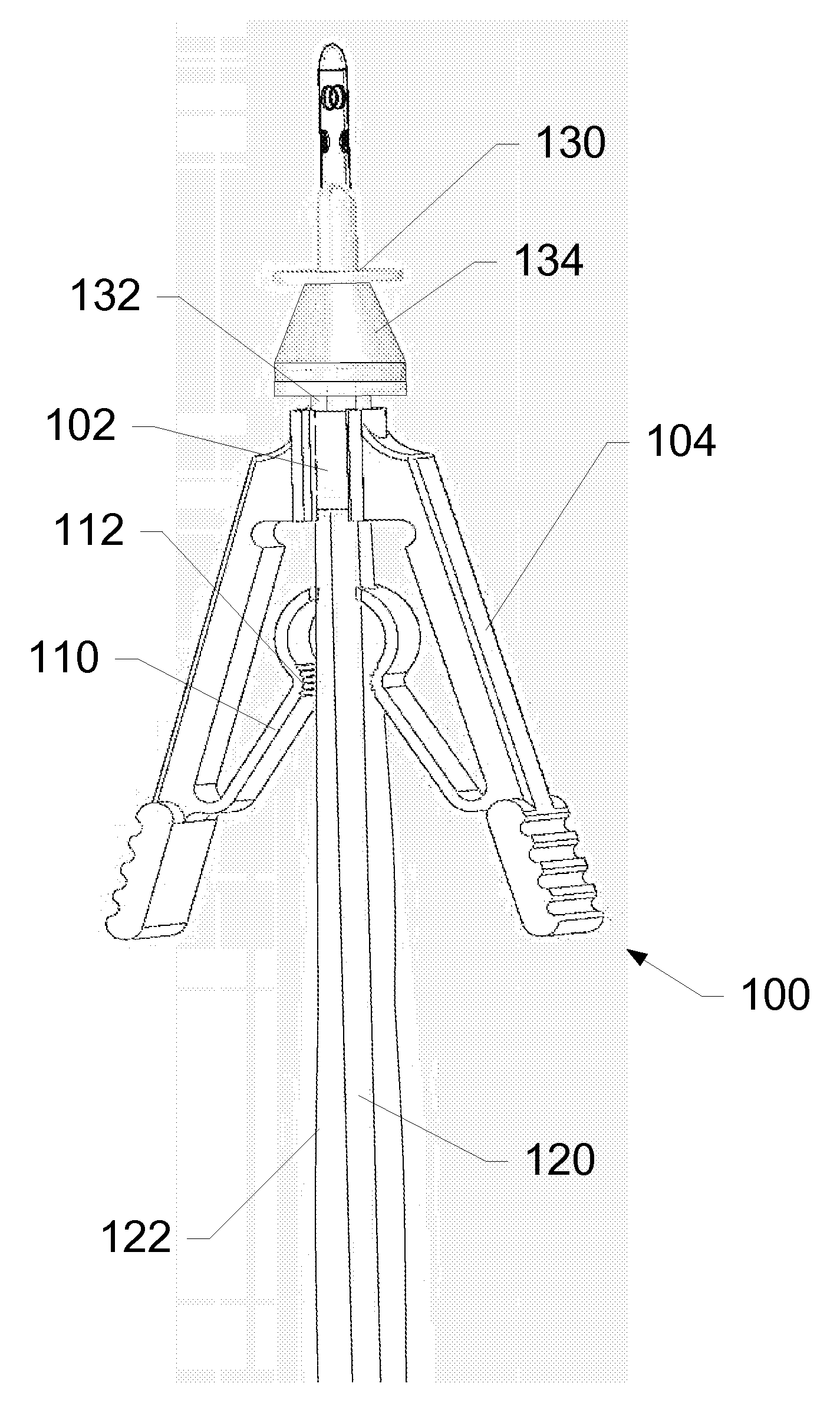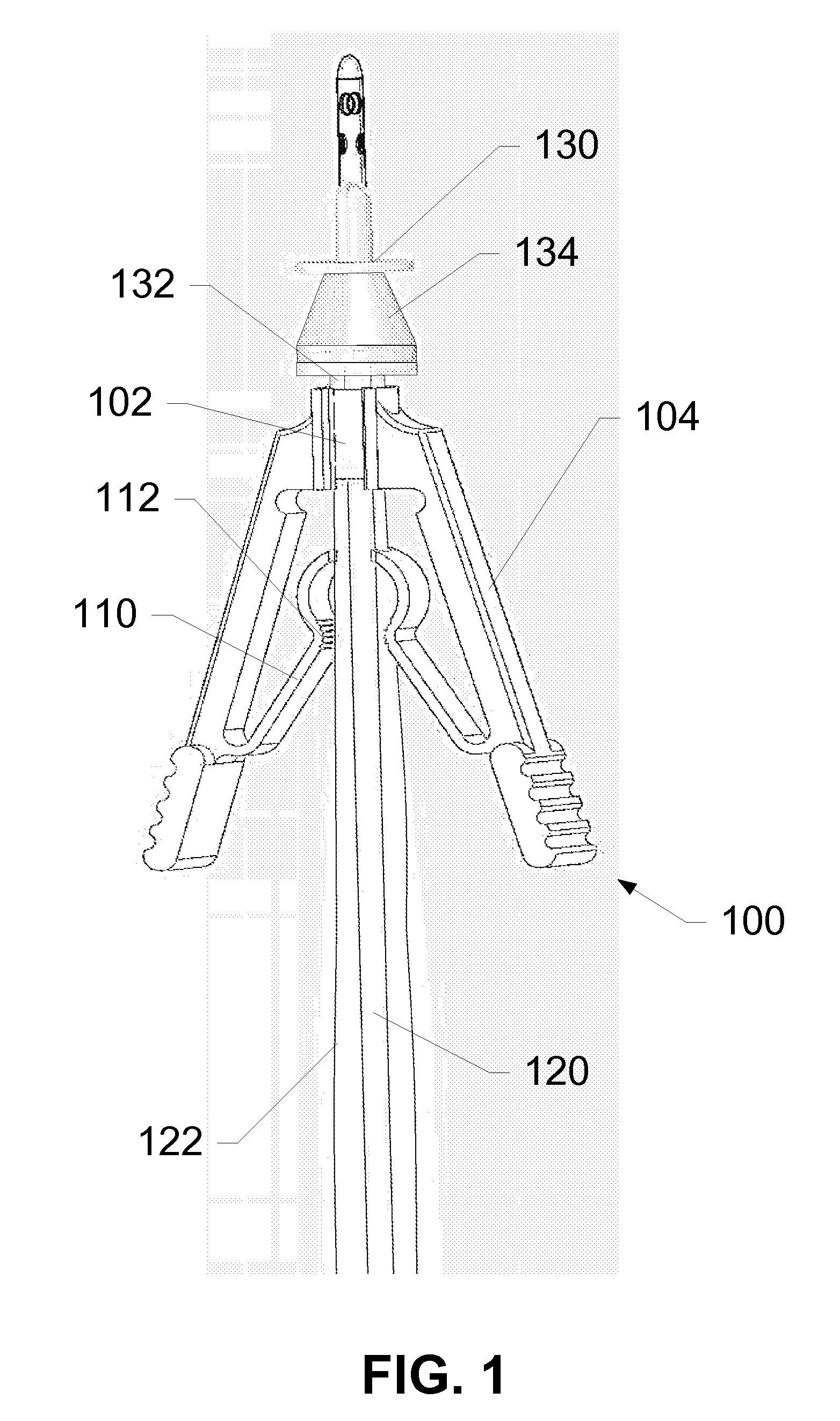Devices and Methods for Catheter Advancement
a catheter and device technology, applied in the field of urinary catheters, can solve the problems of long-term use of indwelling catheters, lack of satisfactory catheterization kits, and individual need for intermittent catheterization
- Summary
- Abstract
- Description
- Claims
- Application Information
AI Technical Summary
Benefits of technology
Problems solved by technology
Method used
Image
Examples
Embodiment Construction
[0024]The present invention provides a catheter advancing device for advancing a catheter into the urethra of a user. The catheter advancement device comprises a body portion that couples to a guide portion of the catheter, the guide portion being movably coupled to the catheter. The guide initially encloses a proximal end, or tip, of the catheter. The catheter advancement device further comprises a pair of flexible handles extending outwards from the body portion, and a gripping portion extending inwards from each of the flexible handles. A surface of the gripping portion comes in contact with the catheter when the flexible handles are engaged, and the surface of the gripping portion in contact with the catheter applies pressure to the catheter when the handles are engaged to advance the catheter through the guide portion. The rate of advancement and the pressure applied can be controlled by a user with limited dexterity, simply by adjusting the user's grip on the flexible handles....
PUM
 Login to View More
Login to View More Abstract
Description
Claims
Application Information
 Login to View More
Login to View More - R&D
- Intellectual Property
- Life Sciences
- Materials
- Tech Scout
- Unparalleled Data Quality
- Higher Quality Content
- 60% Fewer Hallucinations
Browse by: Latest US Patents, China's latest patents, Technical Efficacy Thesaurus, Application Domain, Technology Topic, Popular Technical Reports.
© 2025 PatSnap. All rights reserved.Legal|Privacy policy|Modern Slavery Act Transparency Statement|Sitemap|About US| Contact US: help@patsnap.com



